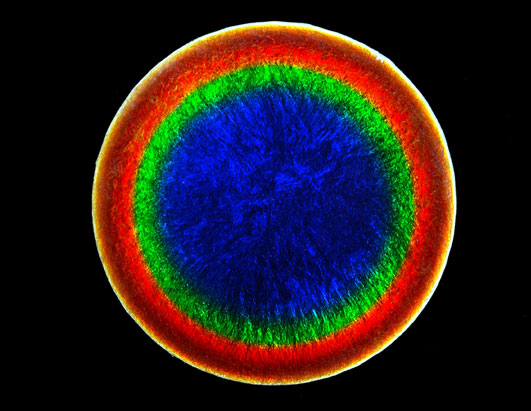A modern manufacturing approach entails the ability to overcome current technological limitations encountered by the microelectronics and data storage industries, while paving the future path to smaller electronic devices and much larger volume data storage devices

"Over the past 30 years, researchers have been able to minimize the size of electronic devices and the size of the molds used to make these devices, while adopting the same lithographic materials, tools and approaches and thanks to the specialization of researchers in this field," says Paul Nealey, director of the Center for Engineering and Nanoscience at the University of Wisconsin-Madison (NSEC).
Now, these materials and methods have reached their basic technical limitations, which prevent further progress in the field. In addition, the researcher says, the utilization of lithography - a process used to prepare the production molds - for smaller and smaller dimensions may become too expensive. Further advances require a new approach to meet the economic constraints and stringent quality control standards in this industry.
In a joint effort between academia and industry, professors of chemical engineering and biological engineering teamed up with researchers from the technology company Hitachi Global Storage Technologies to test a new and promising avenue for common methods. In the August 15th issue of the journal Science, the team demonstrated a technology for making molds that may revolutionize this field while obtaining improvements in performance relative to existing methods and even reducing production time and cost.
The method is based on well-known approaches that combine common lithography techniques used to prepare patterns in microelectronics together with materials produced through a process of self-aggregation and called block copolymers. When added to the surfaces, on which the lithographic patterns exist, the long molecular chains of the copolymers self-assemble into the intended arrangement.
"There is structured information in the compounds so that sizes and characteristics with desirable properties are obtained," explains the lead researcher. "Thermodynamic driving forces force the structures to be more uniform in size and more compact than those obtained by current methods."
Copolymers of this type design the final surfaces down to the molecular level and thus provide a precision that cannot be obtained with the existing lithography methods alone and not even by correcting the defects existing in the chemical template. Such nanocontrol also allows researchers to produce high-resolution surfaces capable of storing more information than those available today.
In addition, these copolymers require only about a quarter of the information in the template relative to existing materials in order to produce the desired molecular structure, thus optimizing the process immeasurably, explains the lead researcher. "If you only need to make a pattern from every fourth point on the surface, you can make these patterns while saving time and cost," he adds.
"This research addresses one of the most significant challenges in the field of information storage - the mass production of high-volume printed disks at an affordable price," says Richard New, director of research at Hitachi Global Storage Technologies. "The great potential inherent in the high density of printed media makes it one of the most promising cutting-edge technologies for the production of future hard drives."
In a certain way, this method is most suitable for the production of hard drives and similar data storage devices that require very uniform printed patterns - exactly the type of characterization that is so easily obtained by the copolymers. Along with other advances, the method may also be useful for planning and designing more complex patterns, such as microchips.
"These results have profound implications for advancing the performance and capabilities of printed materials and processes beyond current limitations," explains the lead researcher.

2 תגובות
Yes, this technology can be rewritten, because we are talking about hard disks.
Is it also possible to "delete" the information after it has been written? Or is it a one time memory?